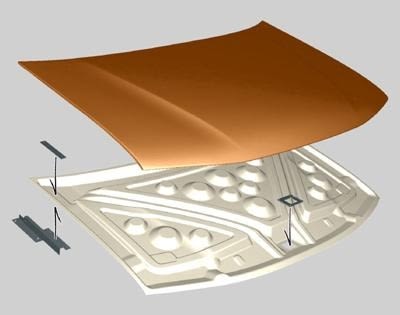 SABIC Innovative Plastics and Azdel, Inc. have launched their new hybrid thermoplastic composite grade, IXIS 157 composite, a continuous glass-fiber-reinforced sandwich composite for automotive horizontal body panels.
SABIC Innovative Plastics and Azdel, Inc. have launched their new hybrid thermoplastic composite grade, IXIS 157 composite, a continuous glass-fiber-reinforced sandwich composite for automotive horizontal body panels. In the ongoing search for new ways to reduce vehicle weight, automotive OEMs and tiers have been looking for a better alternative to steel, aluminum and thermosets for large, aerodynamic, horizontal body panels. Now, SABIC Innovative Plastics and Azdel, Inc. have launched their new hybrid thermoplastic composite grade, IXIS 157 composite, a continuous glass-fiber-reinforced sandwich composite for automotive horizontal body panels.
IXIS 157 composite is the first product launched using high performance thermoplastic composite (HPPC) technology - which won the 2007 Frost & Sullivan Excellence in Technology award - and provides critical advantages over traditional materials, starting with a 50 percent weight reduction compared to steel. By adopting IXIS thermoplastic composites, automakers can design cost-effective, lightweight and aerodynamic body panels that will help drive the success of fuel-efficient future models.

The IXIS composite is composed of a random glass fiber reinforced core with a glass content (by weight) of approximately 50 percent, together with a 0?/90? skins of continuous unidirectional fiber reinforced thermoplastic. The skin material enables a Class A paint finish and dimensional stability, while the core material aids processing and reduces overall material costs.



